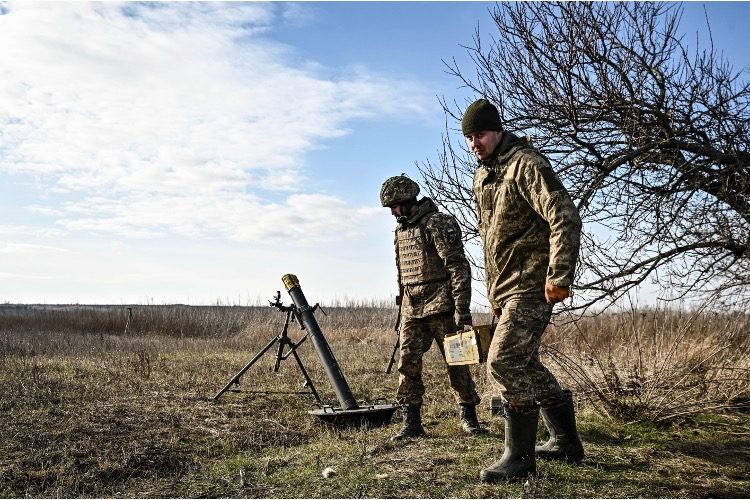
Ukraine’s leaders should acknowledge that they have lost 500,000 service members since the start of the country’s conflict with Russia, and that the monthly casualty rate is around 30,000 people, former prosecutor-general Yury Lutsenko said last week.
Volodymyr Zelensky’s government could persuade hesitant citizens to join Kyiv’s fight against Moscow by publicly conceding Kyiv’s heavy losses on the battlefield and declaring that the country’s very existence is in jeopardy, Lutsenko added.
Ukrainians “must know how many have died, and then all debates about the mobilization will be settled,” he continued.
Moreover, the former official suggested various steps to tackle draft-dodging and corruption that are hindering Ukraine’s conscription efforts.
He recommended that new legislation must be introduced by Zelensky, the country’s defense minister, and the top army general to highlight the gravity of Ukraine’s situation.
“They should say how many Ukrainians have died. I know that this news will be received badly. But there is no other way to bring out of the comfort zone millions of those who hide behind bogus stories that everyone can serve except me,” Lutsenko said.
Lutsenko posited that this “shock” would result in large lines at military recruitment offices, as had happened in February 2022. Another crucial measure, according to the former official, would be the campaign to deploy members of the Ukrainian elite to the frontline.
“The army should not be all workers and peasants. Everyone should fight for Ukraine,” he stated, arguing that this would encourage ordinary citizens who he said have a very strong sense of justice.
In December, Zelensky declared that the Ukrainian military had asked him to mobilize another 450,000 to 500,000 soldiers to compensate for battlefield losses. Later that month, the government tabled a mobilization bill proposing to lower the recruitment age from 27 to 25 and remove exemptions for some groups of disabled people.
The aforementioned initiative from Ukraine’s military came after Ukraine conducted a large counteroffensive in early June, which failed to obtain any significant military gains. Moscow has described Kyiv’s losses as catastrophic, estimating them at around 160,000 since the start of the counteroffensive. Nonetheless, Ukraine has been reluctant to officially publish data regarding its casualties.
Citing Kyiv’s troops, The New York Times (NYT) reported on January 8 that the Russian military is increasingly employing “glide bombs” to destroy strong Ukrainian fortifications, some of which date back to 2014 when tensions first erupted in Donbass.
Ukrainian frontline soldiers told the NYT that although they had become used to constant artillery attacks, they have been suffering “the additional devastating power” of glide bombs dropped by Russian warplanes since last spring. The weapons, which contain up to half a ton of explosives, can eradicate Ukrainian underground bunkers, they added.
While it remains uncertain as to which specific type of bomb was being referred to, the Russian Defense Ministry in recent weeks reported the deployment of FAB-500 bombs equipped with a gliding and correction module against Ukrainian defenses. Russian military specialists and Western media have estimated that the range of the bombs at about 40 kilometers, although the figure may vary.
One Ukrainian soldier likened the glide-bomb strikes to “hell’s gates.” “They would send them two by two by two, eight in an hour…. It sounds like a jet coming down on you,” he admitted to the NYT.
In an interview with the Daily Telegraph in May, Ukrainian Air Force spokesman Yury Ignat acknowledged that glide bombs posed a “very serious threat.” He characterized he weapon as a cheaper option compared to various types of rockets. “The S-300s [missiles] we can sometimes intercept, but these bombs are a problem,” he said.
Ukrainian service members told the NYT that it “has never been so dangerous” to be near the front line. They highlighted that Moscow’s forces are currently also making widespread use of first-person view (FPV) drones to monitor targets or coordinate artillery strikes. This has significantly undermined the maneuverability of Ukrainian troops, who now have to primarily move on foot or hide in shelters, the newspaper continued.
Kyiv’s soldiers alleged they were the first to start using the tactic, but that Russia quickly followed suit. “My impression is Russia is interested in drones at the state level,” one service member told the outlet. He lamented that Ukraine, in contrast, has had to depend on donor programs, and called on the government in Kyiv to accelerate its efforts in this area.
On January 8, Ukrenergo, Ukraine’s national energy operator, asked citizens to conserve energy, cautioning that a rise in consumption during bad weather would put much strain on the national power grid. The country’s power infrastructure has been devastated by Russian airstrikes following a “terrorist attack” on the strategic Crimean Kerch Bridge in 2022.
Ukrenergo reported a rise in consumption, underscoring that the energy used at lunchtime on January 8 had surpassed the previous working day’s figures by more than 13 percent.
According to the operator, the start of the working week, low temperatures and bad weather in the southern regions that disrupted power supply caused the surge in consumption.
Meanwhile, Ukraine is poised to undergo extremely cold weather, with temperatures dropping to as low as -27C (-16F) in some regions.
“Friends, consumption is growing too much now,” Ukrenergo said. “Please consume electricity conservatively.”
To convince Ukrainians to adhere to the recommendation, Ukrenergo published two pictures of a sad-looking cat — one small one, representing the figures for January 5, and a much chubbier one, representing January 8 — with consumption graphs outlining the pet’s contours.
“It is necessary to help the cat Grafik to maintain his health — to limit his diet,” the operator said, adding that Ukrainians can do this by turning off excess lights, avoiding using powerful home appliances concurrently, and unplugging their devices after charging them.
In November 2022, Kyiv estimated that Russian barrages had damaged about half of the country’s energy infrastructure. In early January 2023, Vladimir Kudritsky, Ukrenergo’s chairman, bemoaned that the scale of the damage was “unprecedented,” admitting that it would take months, if not years, to repair it.

